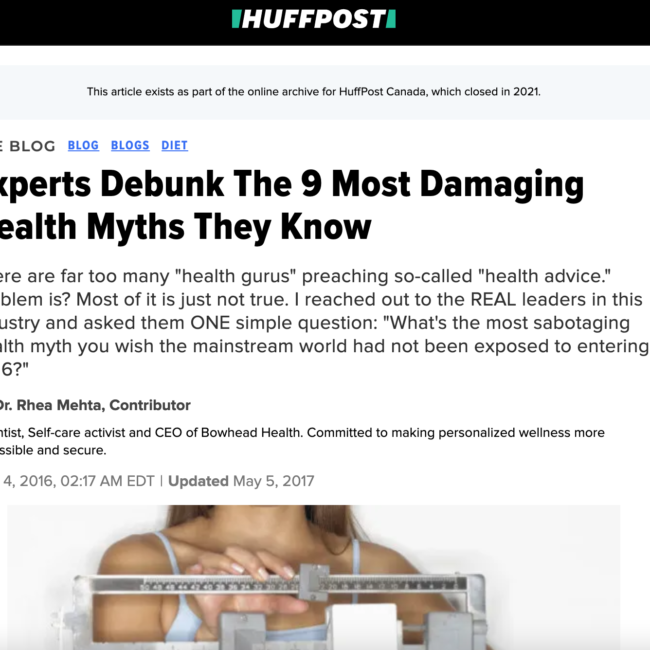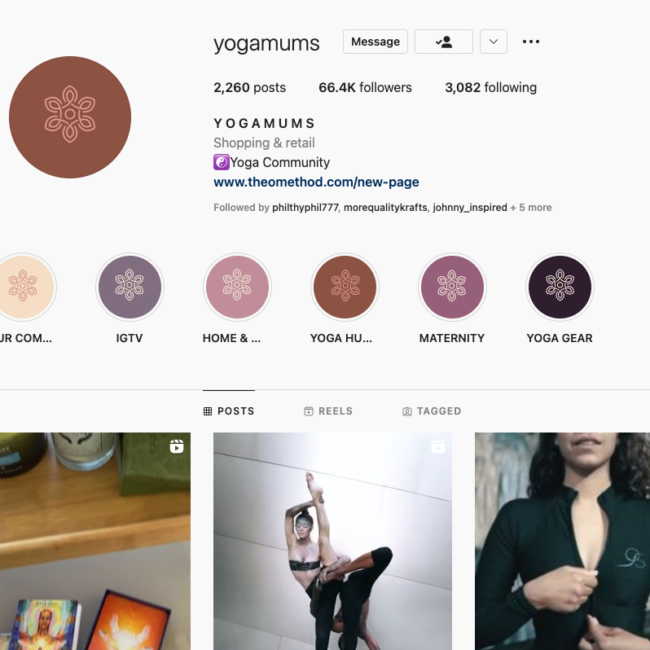
Paid Ads: Current Trends, Strategies, and Other Paid Ad Campaign Insights
Paid advertising returns two dollars for every dollar spent—that’s a 200% return on investment.
Do you have any other marketing campaigns that are generating that kind of ROI? Many people tend to avoid paid ads because there are so many free avenues for marketing online, but the fact of the matter is that paid ads work.
Not just that, but any business that intends to stay in business needs to embrace and integrate a marketing plan that includes a strategy for paid ads. And speaking of facts, it’s also been proven that since customers are now spending more time online than on other media, your online ads are going to get the most visibility of all your marketing efforts. It only makes sense that you invest a little of your marketing budget for this particular strategy.
But how do you do it? What types of paid ads are there out there? Are we talking just about PPC ads on search engines, or are there other paid marketing campaigns to consider? We’ve got the answers to all these questions and more in this guide. Before we dive into the details, let’s take a look at a few more statistics that make the case for paid advertising efforts, regardless of what business you’re in.
Paid Advertising by the Numbers
- 27% of Gen Z users follow influencers and look to them for purchasing decisions, as well as other favorite brands, insights, and promotions.
- More than 2/3 of all digital ad spend is going to Facebook and Google
- $566 billion is anticipated to be spent on digital marketing by the end of 2022, with most going to paid ads and campaigns.
- 46% of all page clicks are for the top three PPC advertisements.
- Those who click on PPC ads will be 50% more likely to make a purchase than those who use an organic search result.
- More than half of all Internet users can’t tell the difference between paid ads and organic search results.
- 52% of PPC clicks come from mobile users.
- Video ads can increase conversions by as much as 86%.
- Over 40% of shoppers (globally) purchased items discovered on YouTube.
- 90% of all users say watching videos informs purchase decisions.
- 74% of people use social media when they make purchasing decisions.
Types of Paid Ads
There are several types of paid marketing out there and they come from various channels and avenues. It may take you some time to build a strategy that effectively covers them all, and that’s okay. Just as long as you’re starting a paid ad campaign and have plans to engage in all ways possible, you’re on the right path. To help get you started, here are the four main areas of paid ads that you’ll need to be familiar with.
Paid search marketing: Also known as PPC or pay-per-click marketing, paid search ads allow you to get listed at the top of the search results. For even better chances of success, use location-based bidding so that you can target audiences in your specific region or city. Google Ads has a lot of tools to help you set up PPC campaigns on its search engine pages, as do other search engines that offer paid ad space.
Paid social media ads: As social media has become a main avenue of communication and socialization, as well as a main form of entertainment for many, paid ad campaigns on these platforms have become popular. Also sometimes called sponsored ads, these are listings that show up on Facebook feeds or on Instagram based on the content people are searching for or their interests on social media. You can set up paid ad campaigns on almost every social media site these days. Make sure that you choose the channels that your audience is most likely to use. You can enlist the help of:
- Paid LinkedIn ads
- Instagram paid ads
- YouTube paid ads
- Paid Facebook ads
- Twitter paid ads
Display/banner ads: These are some of the oldest ads the Internet has to offer. Display marketing has been around since the early days of the Internet and it has come a long way. In addition to traditional banner advertising and display ads, there’s also now the option to join the Google Display Network, where you can get display ads out to 90% of all Internet users across millions of websites. This is also a more cost-effective option than traditional display advertising because of the reach you get for the money.
Influencer marketing: This is a relatively new form of marketing for digital audiences, but it’s not entirely new to the marketing space. Think of Internet influencers as the modern spokesmodels or spokespersons of marketing. Where you once had a celebrity promoting car insurance on TV, you now have an Instagram influencer promoting the new iPhone to the 18-25 demographic that follows their Instagram channel. Influencer marketing isn’t for every brand, but if you really want to get people’s attention with paid advertising, it can be quite effective.*
*Influencer marketing is typically more effective for younger audiences, although as more people use the Internet regularly, the audience age range for this type of marketing is starting to grow. Still, it’s typically best for the under-40 audience.
Benefits of Paid Marketing
We live in a world where today’s customers are far more likely to encounter a brand for the first time in the online space. 87% of all retail shoppers report starting their search on digital channels, regardless of whether their ultimate purchase happens online or in-store. If you don’t have a digital presence, customers aren’t going to be able to find your business. While organic efforts are important, paid as can enhance your strategy by helping to:
- Build brand visibility and awareness
- Encourage customer engagement
- Target specific audiences or demographics
- Give you the tools to measure and optimize campaigns
And, when you compare it to organic marketing, paid ads offer faster results, more focused targeting abilities, and a chance to reach people based on user signals like previous interactions and search queries.
While you can use organic marketing as the foundation of your branding and targeting strategies, it cannot be your only strategy. Paid marketing empowers brands to target audience messages based on platform, keyword, content, and more. When you combine this with the increased ROI (200%), you’re getting a marketing tool that’s proving itself before you even get started.
Paid advertising is measurable, instant, and cost-effective. It helps brands target better audiences and make better marketing decisions in the future by giving them immediate, measurable results. Unlike organic search where your hope is to reach audiences, you can use paid marketing to guarantee that you’ll reach the right audiences, at the right time, and in the right place.
Paid Advertising Pro Tips
Omnichannel marketing is a must. When considering a paid ad strategy, it’s not about picking one avenue or choosing one platform. You might do this to get started, but your strategy should be dynamic and include all of the paid efforts that you are engaging with, including:
- Influencer marketing
- Video marketing
- Mobile/app marketing
- Social media advertising
- PPC campaigns
- Display ads
Another big tip, and one that some people overlook, is to make sure that the channel matches the customer. That is, you’ll want to target the right people on the right platforms. You wouldn’t post LinkedIn paid ads if you were trying to reach recreational audiences, just as you wouldn’t use Instagram or TikTok to reach the 50+ audience, generally speaking. As always, there will be exceptions to all the rules for the right situations.
That’s where the biggest pro tip comes in handy: get professional help for your paid advertising efforts. But we’ll get to more on that later. First, let’s take a look at some future trends to look forward to with paid advertising.
Paid Advertising Trends
Several trends are going on right now in the world of paid advertising. The first is the use of AI and automation in audience segmentation and targeting. This can be seen when you search for something on Google, and then a few days (or hours) later, it shows up on your Facebook feed. The AI uses previous search history to target audiences and individuals, and machine learning is used to execute the best campaigns.
Voice search is also growing in popularity, which is changing the way that people search for things. While someone might type “local plumber Cleveland” in a search engine, they may voice search the same query as:
“Where can I find a local plumber?”
Google, Siri, or whoever is answering the voice search, will take that query and return the most relevant results, including paid ads. Catering search terms to this new method of seeking products, services, or information will go a long way in helping your brand succeed.
Remarketing is another great use of paid search and it’s making quite a splash. As mentioned in the previous benefit of AI, the search engines and social networks can take information about where people have been and then use that to remarket or re-target them accordingly. The effectiveness of retargeting has only increased over the years. Today, Facebook will show you the exact same sneakers you looked up through a search engine, not just generic shoe ads.
Machine Learning and Optimization
Perhaps one of the biggest trends is that as AI and machine learning improve, that will also help improve optimization efforts. Smart features have been developed for several online marketing tools and platforms, including a host of features that make Google Ads easy enough for even the most novice user. And, Google recently introduced Smart Bidding, which can help you manage bids for larger product inventories.
Machine learning can also be used to develop predilection modeling and anticipate customer journeys, although this will also continue to be developed in the future. The ultimate result of all of this is increased optimization. That means your ad spend will go further and deliver more accurate results when you utilize paid marketing.
How to Build Your Paid Ads Strategy
Although the actual process will be specific to each business, there are some steps that you can follow to help you build a successful paid marketing strategy. It starts by setting clear goals that are SMART (specific, measurable, attainable, relevant, timely/time-specific). Once you have those goals in place, you will be able to distribute ad spend based on each goal and its priority.
You will also be able to analyze your results, benchmark them against past campaigns, and more. You can repurpose the most engaging organic content that you have as part of your paid advertising strategy, as well as create new content that is relevant and delivers new information that drives people to make purchasing decisions.
At this point, you’ll want to get as specific as you can with audience targeting. The more targeted your audiences, the more successful your paid ad campaigns will be. Consider elements like demographics, gender, user activity, device access, and so forth. The idea is to make the audience as relevant as possible to your ad’s content and end goals.
Customize your strategy with hyper-focused and custom niche audiences, based on the platforms you’re using for paid advertising as well as the types of advertising that you intend to use.
Work with the Experts for the Best Results
Of course, you’re probably not a marketing guru yourself. You may have a good handle on paid advertising now that you’ve finished this guide, but that still means you need to take the information and turn it into a usable digital marketing strategy. Words without action are useless, and especially in this situation.
The good news is that you don’t have to do it all on your own. Marketing agencies and professionals are out there waiting to help you create the best paid marketing strategies, no matter what business you’re in or what type of ads you have in mind. They can help with everything from strategizing to execution, monitoring and follow-up, and more. So, if you’re just getting started in paid advertising, it’s best to ask the experts for a hand for the best outcomes.
Resources
https://www.statista.com/topics/1176/online-advertising/
https://www.webfx.com/digital-advertising/statistics/
https://www.brafton.com/blog/paid-search-blog/paid-marketing/
https://meazy.co/blog/future-trends-of-paid-advertising
https://www.growthcollective.com/blog/5-paid-media-trends-to-watch-out-for-in-2022
https://buzzsumo.com/blog/paid-advertising-strategy/#section-16





